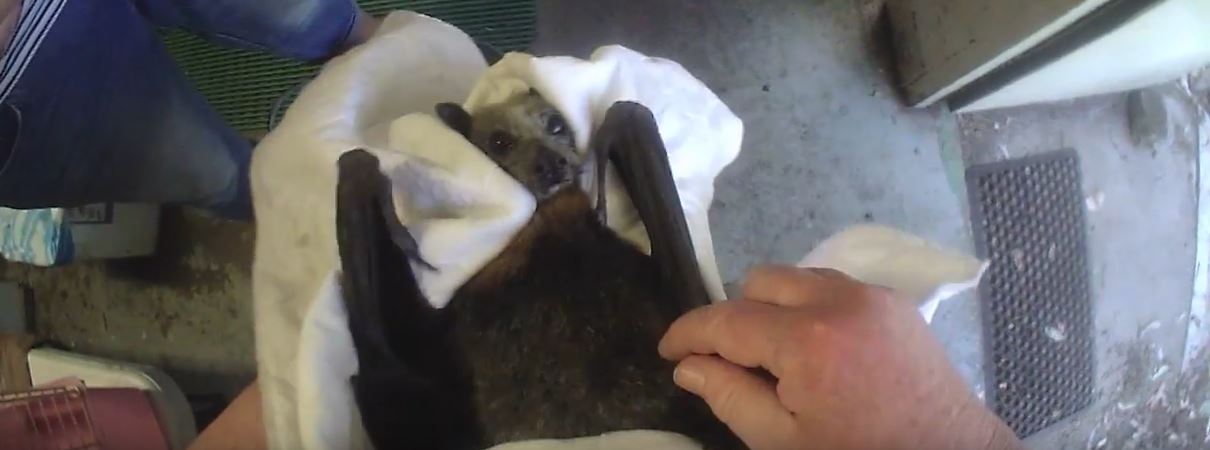Bat Trapping: How To Trap A Bat

All experts agree that if you have a bat inside your home, you should do your best to get it out as soon as possible. Despite this, trapping is not always the best option. If the bat is flying freely in your home, it may be necessary to trap it and then release it outside, but in the case of bats in your attic or outside of your house but on your property, there are typically better options. If you choose to trap a bat, then you will need to know the best way to do so and this process is fairly similar to trapping other animals.
Choosing The Trap
You always want to use live traps to catch bats as they are the only humane method. There are glue traps available and some people use them for bats, but they are not only inhumane but illegal when used to kill bats. That is because bats are protected species. As such, live traps are your only real option. There are various configurations with most traps fitting just one bat. This means that you will need to have a trap for every bat in the colony, which could easily be dozens to hundreds. Otherwise, you will find yourself constantly trapping and releasing bats.
When selecting your trap, always make sure that it will not harm the bat and provides enough room for the animal to fly around. One common method is to modify a cage trap or create your trap by modifying a box.
Placing The Trap
To successfully catch the bats, you will need to place your trap in the ideal location. Some people place their modified boxes or cage traps immediately outside the entrance so the bat will fly almost directly into it. No matter where you place the trap, you must check it regularly as bats confined to cages will undergo a great deal of stress and are likely to die if left for more than a short period of time.
What To Do With The Bat
After trapping the bat, you will have to decide what to do with it and this can be somewhat complicated. Remember that it is illegal to kill bats since they are protected species. This means that you will have to release the bat somewhere. Bats, however, have excellent instincts and have been known to find their roosts from distances of 500 miles. This means that you would have to drive at least that distance to release the bat. The alternative is to simply take the bat outside, seal up the remaining entry points, and then release it. If the bat is no longer able to get inside your home, you should be okay. Remember that all repairs will have to be done prior to release and you can't keep a bat in a cage for an extended period of time. Also, if you are trapping a bat simply to release it directly outside your home, exclusion makes more sense as a time-saving alternative that doesn't require you to handle bats directly.
Health Concerns Of Trapping Bats
In addition to the difficulties in catching bats, there are a few health concerns associated with trapping them. Bats aren't typically aggressive, but they may become defensive when being trapped and bite you. Although rare, it is possible for a bat to carry rabies, in which case you need to begin treatment immediately. Trapping the bats will also put you at risk of increased exposure to histoplasmosis, a lung infection that is transmitted by a fungus that breeds in bat guano, or feces. Those with weakened immune systems are especially prone to this illness.
Exclusion As An Alternative
Instead of trapping bats on your property, all reputable wildlife removal experts will suggest excluding them. This method involves sealing up all of the entrances to the bats' roosting area with the exception of one. You then place some sort of exclusion device over this hole so the bats can leave but not get back in. Hanging a piece of netting over the hole is a popular option as the bats will be able to slowly crawl down the netting to leave, but cannot repeat the process in reverse to get back inside.
Exclusion is particularly useful when you have an entire colony of bats in your attic or another part of your property as there is no limit to the number of bats it will work with, as opposed to traps which can only catch one bat at a time. With exclusion, you wait several days or more until all of the bats have left and then seal up the remaining hole. After this, you simply keep the bats out of your home by making sure that all gaps in your siding and roof are properly sealed at all times and staying up to date with general home maintenance.
Read the How to get rid of bats page for helpful information and to learn more about Bat Trapping: How To Trap A Bat

